Debunking the Cra Myth – Again
Tretyakov gallery, Getty Images, Global Look Printing
Did the city cost thousands of man lives? Was it founded in a swamp? Did the curse of Peter'south first wife come up true? In Russia and abroad, there are myths virtually the foundation of St. petersburg, myths nosotros are here to deflate.
1. St. Petersburg was founded on a vacant plot in the swamps
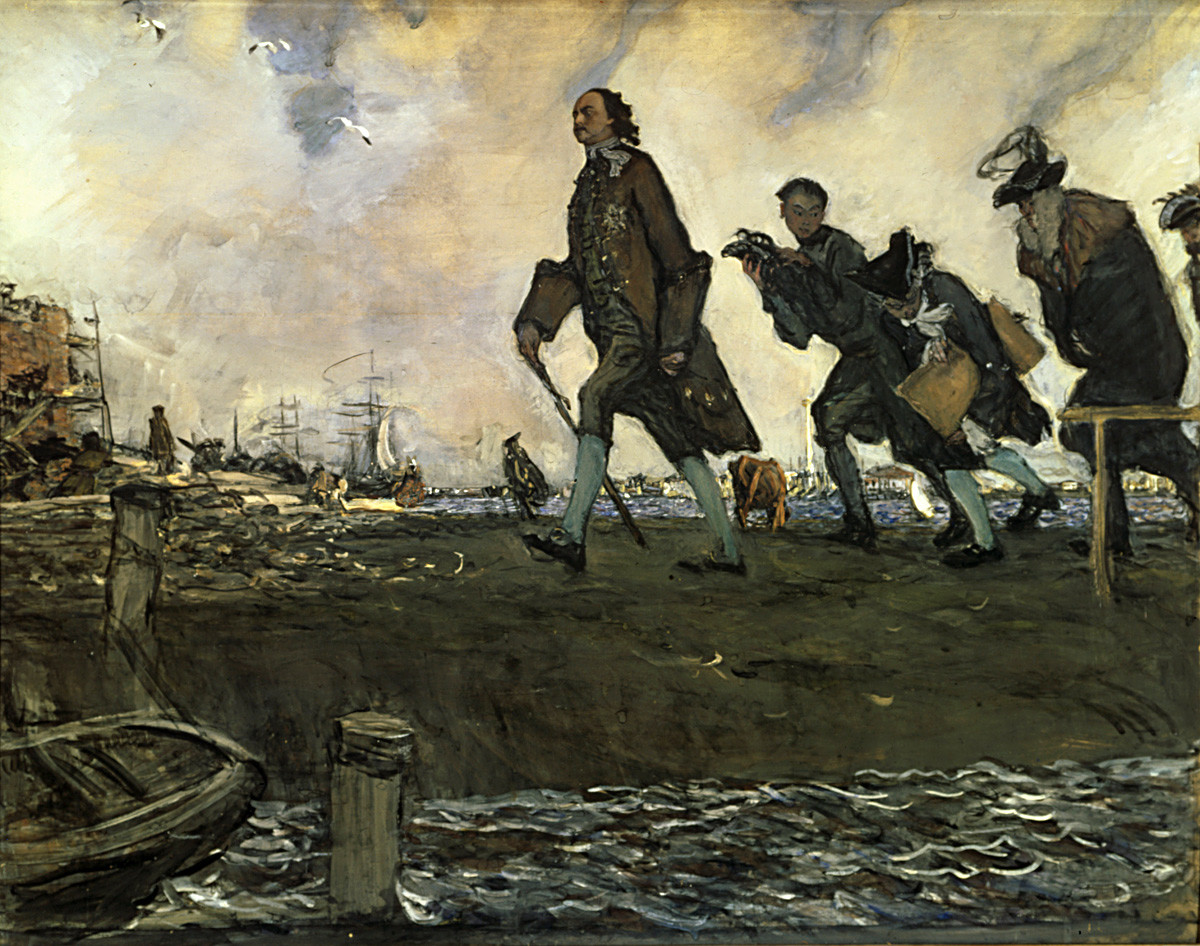
Valentin Serov, Peter I on the Neva Embankment, 1907
Global Await Press
Outset, the identify was a humming spot. Already in 1300, a Swedish fortress named Landskrona was erected here, and subsequently, in 1611, the fortress of Nyenskans took its place, with the Swedish town of Nyen effectually it.
In the 17th century, Nyen became a big trading center, due to its favorable location well-nigh the body of water and at the confluence of several rivers. This is why, when in 1703, Peter the Nifty took Nyen during the Great Northern war of Russia and Sweden, he decided to build a new city here – to further establish Russia's war machine presence on Swedish territory and finally secure Russian federation's admission to the Baltic sea. And in that location's a peculiar fact: when St. Petersburg became Russian majuscule in 1712, information technology was still formally on the Swedish territory (the Saint petersburg region became fully Russian just later on the Northern War concluded in 1721).

Model of the Nyenskans fortress
Evgeny Gerashchenko (CC BY-SA 2.five)
So where did the "swamp" rumor come from? Indeed, in 1705, two years after the urban center's foundation, one fifth of its territory was marshland. A giant swamp was, indeed, on the identify of Paul I'south Mikhailovsky Castle. And an impassable slough occupied what is now considered the city's superlative of nightlife, Dumskaya street.
Simply the urban center was constructed with the help of European urban engineers. They ordered soil to exist brought to St. Petersburg to solidify the basis nether heavy buildings. As soil scientist Elena Sukhacheva says, beds of springs and tiny rivers were filled with sand and rubble, and swamps were tuckered. This all was executed gradually until the 1780s when the Neva River'southward shores were finally dressed in granite.
2. An eagle soared in the skies when Peter the Great founded St. Petersburg

Boats on the Neva River in front of the Peter and Paul Fortress - lithograph - Early 19th century
Getty Images
The Peter and Paul Fortress was founded on May 16th, 1703. There's a persistent rumor that Peter himself laid the get-go stone in the foundation of the fortress while an eagle was flight over his caput.
Even so, this is a complete myth. Co-ordinate to the tracklog of Peter the Cracking, on this day, Peter was stationed much farther North, in Schlötburg, at the place of the former Nyenskans fortress (all his decrees and letters from May-June 1703 are signed in this identify). Finally, no eagles ever inhabited St. Petersburg region.
three. The urban center was congenital on bones
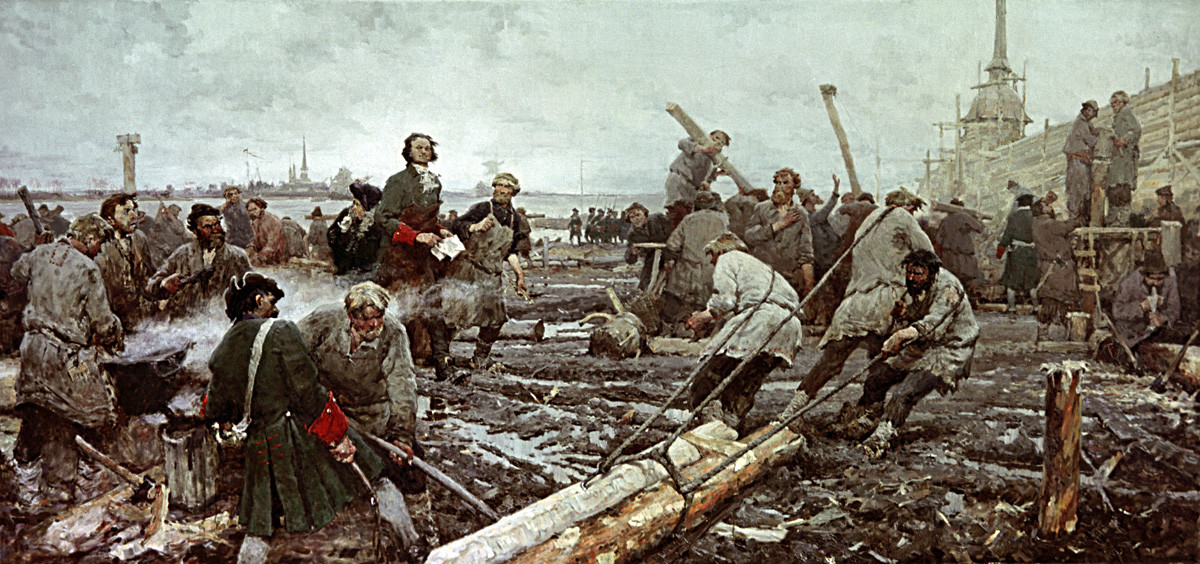
"Peter I at the Construction of Petrograd", by Georgy Pesis.
Leonid Sievert/Sputnik
Legend has information technology that Peter the Great ordered thousands of peasants from Russian regions to build St. Petersburg. They were ill-fed, suffered from wet and frost and died in swarms, buried right there in the swamps. This horrible tale ends with "this is why Petrograd is built on bones".
It's true that structure works were performed by peasants, although they weren't just ordered to come to Petersburg, but rather deputed. Equally of 1704, 40 thousand workers were summoned to St. Petersburg, mostly land serfs or landlords' serfs.
The peasants worked in shifts: after three months, they were allowed to become home. Nonetheless, many of them stayed for the next three months, as the work paid ane ruble per month, a standard worker'due south pay at the time.
Later on 1717, there were no more peasant workers, just an annual taxation was instead introduced. For the construction, the authorities commissioned workers and paid them with the taxation money.
As for the death charge per unit among workers, it was usual for the population at the time. In the 1950s, a Soviet historian conducted excavations on the major building sites of the 18th century and didn't find any prove of mass perishing, just cesspools filled with animal bones. This only proved that workers were fed practiced rations that included lots of meat.
4. Vasilyevsky island should have had canals, but Menshikov stole the money
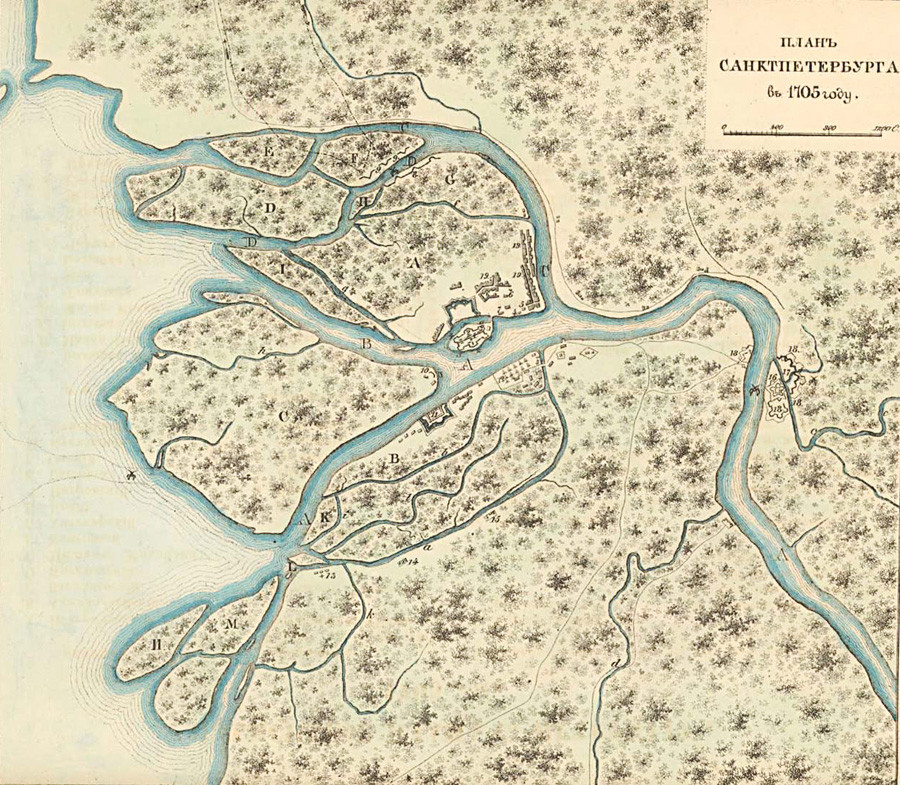
Plan of the city, 1705
Public domain
Jacob von Staehlin (1709-1785), member of the Russian Academy of Sciences, who lived under several Russian monarchs, states in his book 'Original anecdotes of Peter the Great' that Peter ordered the Vasilyevsky island in St. petersburg to become a "piffling Amsterdam" with canals instead of streets, and deputed the chore to his henchman, Prince Alexander Menshikov. But the prince, who was a notorious cheat, stole most of the money, and then the canals turned out likewise narrow for boats to sheet and were somewhen backfilled.
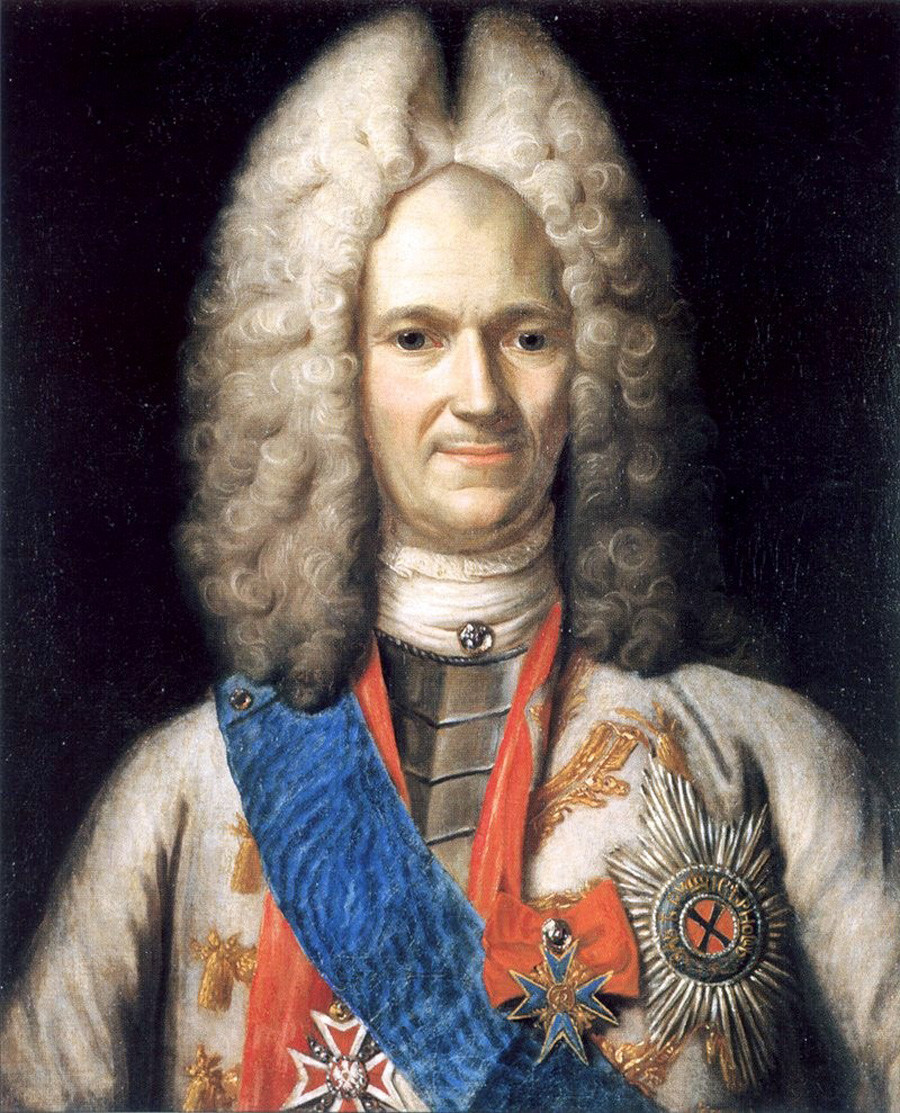
Portrait of Aleksander Danilovich Menshikov
Public domain
In reality, fifty-fifty in 1723, there were no canals on Vasilyevsky island. Merely in 1727-1730 (later Peter's death), did four canals announced, which were so backfilled at the order of Catherine the Slap-up in 1767.
five. 'Petersburg will exist empty!'
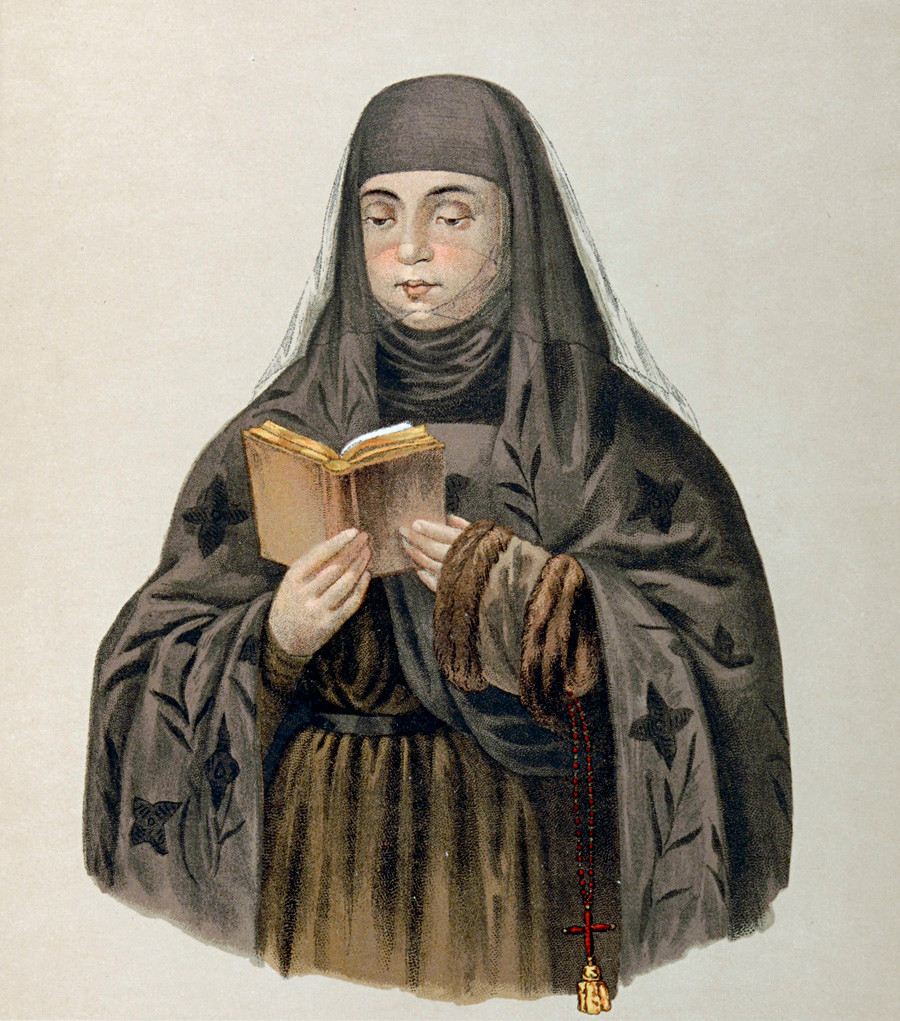
Tsarina Eudoxia (Yevdokiya Fyodorovna Lopukhina) (1669-1731) - first wife of Peter I the Cracking of Russia.
Viktor Kornushin/Global Look Press
Peter the Slap-up didn't love his first married woman, Evdokia Lopukhina, who was a woman of old formation and didn't share Peter'southward passion for everything European. Evdokia was said to have taken part in a conspiracy plot confronting Peter, and then he sent her to a convent, tonsuring her forcibly. Before leaving for the convent, Evdokia shouted nearly St. Petersburg: "This place will be empty!"
READ MORE: Peter the Great and his women
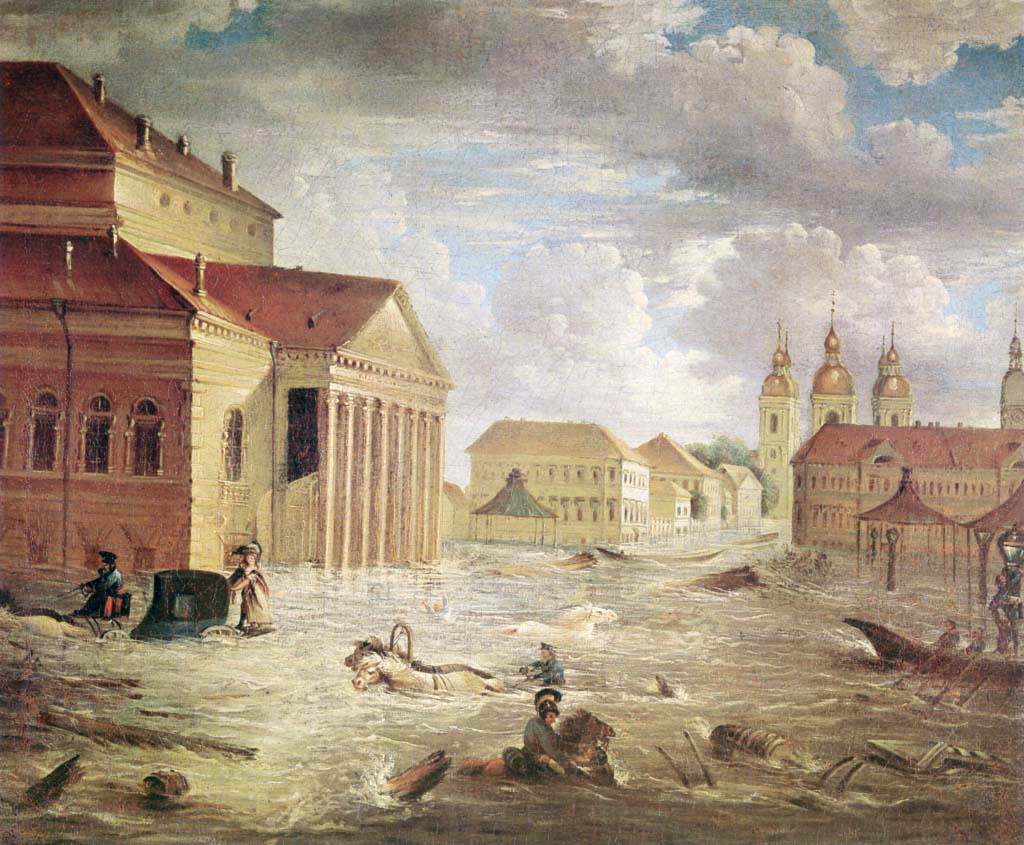
The Flood of 1824 in the square at the Bolshoi Kamenny Theatre by Fyodor Alekseyev
Russian Museum
However, Evdokia could hardly have known annihilation nigh St. petersburg when she was sent to the convent in 1698, 5 years before the town of Nyen had been conquered and the 'place' she was talking most was only defined equally the construction footing for the future urban center. So Evdokia couldn't have predicted that this swampy place volition be subject to many floods (as her 'prediction' was usually interpreted).
READ More than: The start Romanov political exile: How Peter the Bully's son fled Russia
However, Prince Alexei, the ill-blighted son of Peter and Evdokia, repeated the rumor in 1718 when he was interrogated. We believe he just repeated a rumor. But later in the 19th century, Russian historian Sergey Solovyev told this tale once again, and from then on it became a pseudo-historical fact.
If using whatsoever of Russia Beyond's content, partly or in full, always provide an active hyperlink to the original fabric.
Go the week's best stories straight to your inbox
kirkpatrickprimses.blogspot.com
Source: https://www.rbth.com/history/330787-debunking-5-myths-petersburg-was-built
0 Response to "Debunking the Cra Myth – Again"
Post a Comment